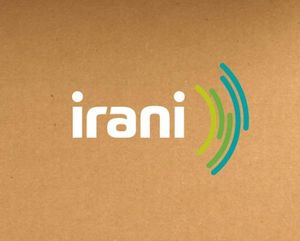ARAGUARI, MG — The payment schedule for the Bolsa Família program in May 2025 has been officially announced by the Ministry of Development and Social Assistance, Family and Combating Hunger. Payments will commence on May 19, 2025, and will be distributed according to the last digit of beneficiaries' Social Identification Number (NIS). This program is crucial for approximately 21 million families across Brazil, providing essential financial support to those in vulnerable situations.
The payments will follow a staggered schedule over the last ten business days of the month, maintaining the standard procedure that has been established for the program. Each beneficiary can check their specific payment date directly on their program card, which displays their NIS. Notably, the only deviation from this typical calendar occurs in December, when payments begin earlier, on the 10th, to ensure families receive their funds before Christmas.
For May 2025, the payment dates are as follows:
- NIS final 1: May 19, 2025
- NIS final 2: May 20, 2025
- NIS final 3: May 21, 2025
- NIS final 4: May 22, 2025
- NIS final 5: May 23, 2025
- NIS final 6: May 26, 2025
- NIS final 7: May 27, 2025
- NIS final 8: May 28, 2025
- NIS final 9: May 29, 2025
- NIS final 0: May 30, 2025
The Bolsa Família program is designed to provide financial assistance to low-income families, fostering social inclusion and ensuring that basic dignity is upheld. To maintain eligibility for the benefits, families must adhere to specific requirements related to health and education. These include ensuring school attendance for children and adolescents aged 4 to 17 and following nutritional guidelines for children under seven years old.
The program comprises various benefits tailored to meet the specific needs of families. The Benefício de Renda de Cidadania (BRC) provides R$ 142 per family member, while the Benefício Primeira Infância (BPI) offers R$ 150 for each child up to seven years old. Additionally, the Benefício Variável Familiar (BVF) grants R$ 50 for pregnant women and children or adolescents aged 7 to 18 years.
Here’s a breakdown of the key benefits offered by Bolsa Família:
- Benefício de Renda de Cidadania (BRC): R$ 142 per family member, regardless of age.
- Benefício Complementar (BCO): Ensures a minimum of R$ 600 per family, adjusting the total amount as needed.
- Benefício Primeira Infância (BPI): R$ 150 monthly for children up to seven years old.
- Benefício Variável Familiar (BVF): R$ 50 for pregnant women and children/adolescents from 7 to 18 years old.
- Benefício Variável Familiar Nutriz (BVN): R$ 50 for babies up to seven months, with transfers starting in September.
- Benefício Extraordinário de Transição (BET): Guarantees that no beneficiary receives less than they did under the previous Auxílio Brasil program, valid until May 2025.
The structured payment calendar for May allows beneficiaries to plan their finances effectively, reducing waiting times at banks and ensuring a smoother distribution of funds. For instance, families with NIS ending in 1 will receive their payments on the first day, while those with NIS ending in 0 will get theirs on the last day.
To continue receiving the Bolsa Família benefits, families must fulfill specific conditions related to health and education. These include maintaining school attendance for children aged 4 to 17 and adhering to the national vaccination schedule for all family members. Regular monitoring ensures that these requirements are met, and failure to comply can result in the suspension of benefits.
Moreover, the Bolsa Família program plays a vital role in combating poverty and inequality in Brazil. It supports around 21 million families, which translates to approximately 50 million individuals. Since its inception, it has been acknowledged by international organizations such as the World Bank as one of the most effective income transfer initiatives globally.
In 2023, the program underwent reforms to expand its coverage and adjust payment amounts in response to inflation and the rising cost of living. The introduction of benefits like the BPI and BVN highlights the program's focus on early childhood development, a critical phase for physical and cognitive growth.
Furthermore, the Benefício Extraordinário de Transição ensures that families transitioning from the Auxílio Brasil program do not experience financial losses, providing a safety net during this period of adjustment.
Studies indicate that the Bolsa Família not only provides financial assistance but also contributes to reducing school dropout rates, improving child health, and increasing the consumption of essential goods like food and hygiene products. In economically disadvantaged regions, particularly in the North and Northeast, the program is instrumental in injecting resources that stimulate local economies.
The effective distribution of Bolsa Família funds is crucial for the financial planning of beneficiary families. The staggered payment schedule allows them to avoid long queues and manage their expenses more efficiently. The government has invested in awareness campaigns to encourage families to monitor the payment calendar and meet the program's requirements.
Beneficiaries can access detailed information about payment dates, amounts, and conditions through official channels, including the Caixa Econômica Federal website and the Bolsa Família app. Keeping their Cadastro Único updated is essential for families experiencing changes in address, family composition, or income to prevent the suspension of benefits.
Despite its successes, the Bolsa Família program faces challenges, such as the need for enhanced oversight to prevent fraud and ensure that resources reach the most needy families. In recent years, the government has intensified verification processes, employing data cross-referencing to identify discrepancies.
Technological advancements have simplified access to the program. The Caixa Tem app enables beneficiaries to check balances, transfer funds, and pay bills from home, which is particularly beneficial in rural areas where banking access may be limited.
The Bolsa Família program continues to adapt to social demands. The inclusion of the Benefício Variável Familiar Nutriz reflects a commitment to addressing the nutritional needs of infants, aligning with health organization recommendations. The program's focus on education and health underscores its long-term developmental goals for future generations.
Ultimately, the Bolsa Família not only benefits enrolled families but also stimulates local economies. The funds distributed are often spent in local businesses, such as grocery stores and pharmacies, creating a multiplier effect. In regions like the Northeast, the program significantly contributes to the income of many municipalities, strengthening commerce and sustaining jobs, especially where alternative income sources are scarce.
As the Bolsa Família program approaches the expiration of the Benefício Extraordinário de Transição in May 2025, discussions regarding its sustainability and potential expansions are ongoing. The integration of the program with other social policies, such as job training and employment generation initiatives, is seen as a pathway to reduce long-term dependency on benefits.
While the Bolsa Família remains an essential tool for millions of Brazilians, the combination of income transfer, conditionalities, and a focus on child development ensures it continues to be a cornerstone in the fight against poverty and inequality.





